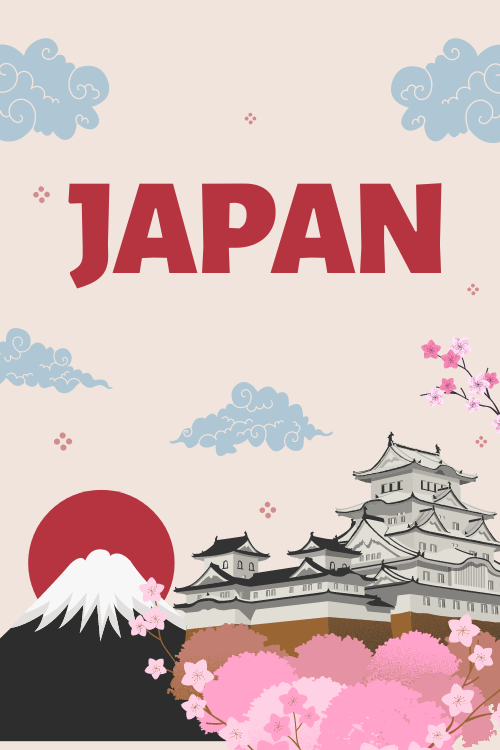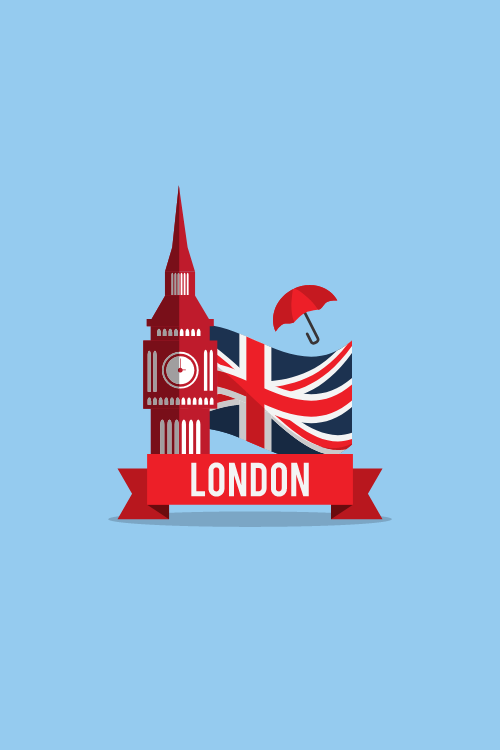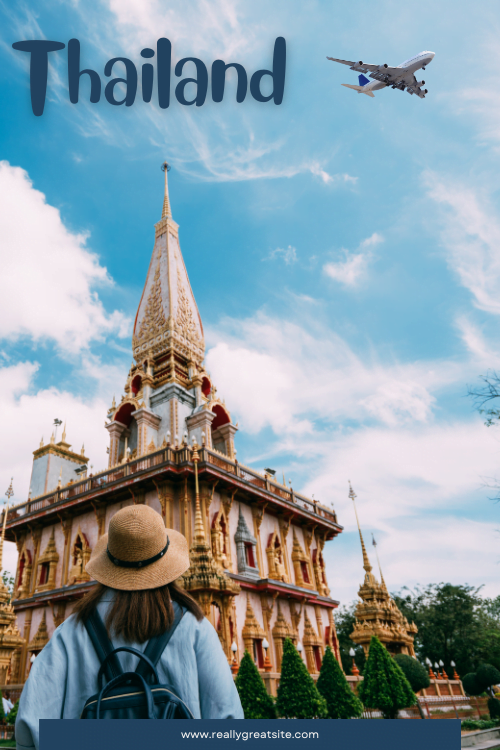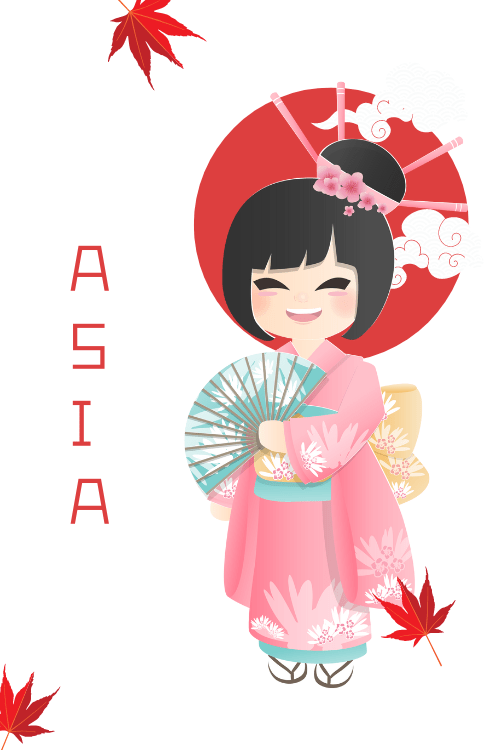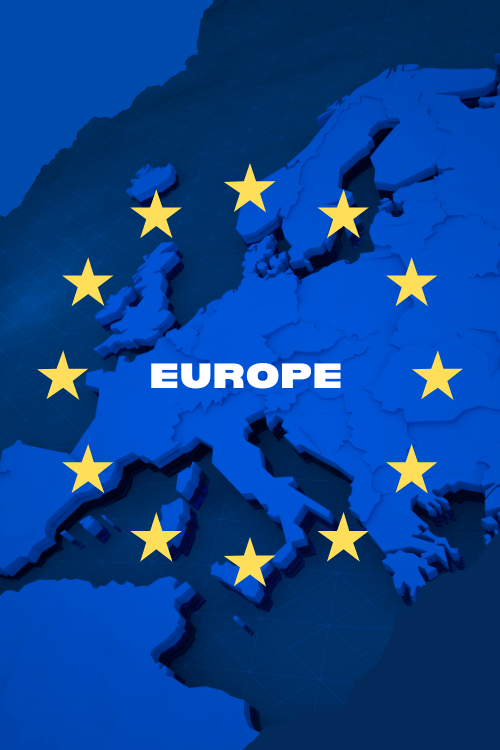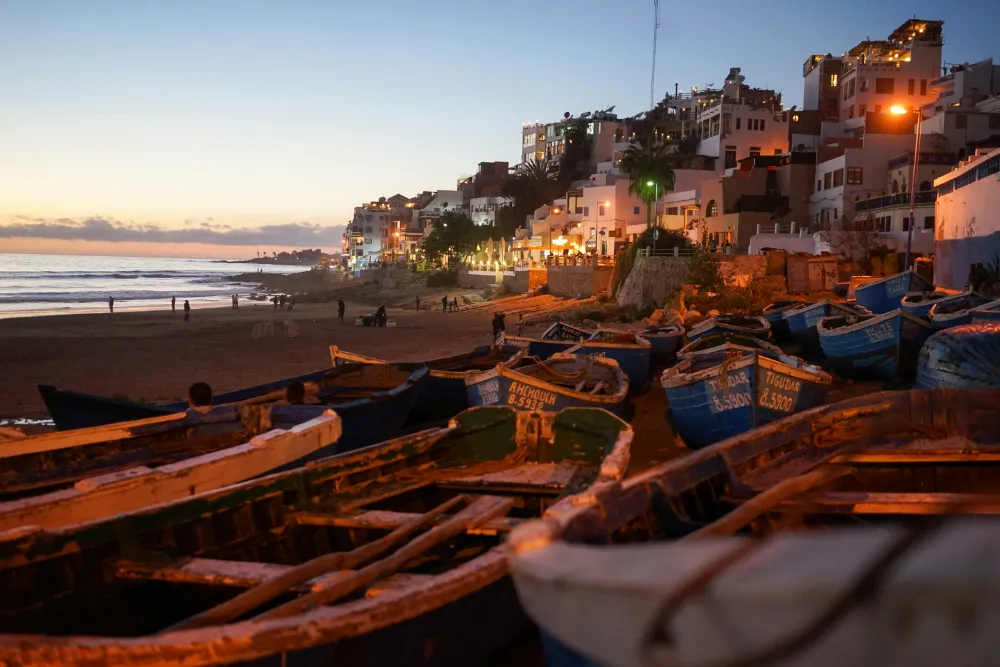Travel Guide
Morocco Travel Guide: Everything You Need To Know
Morocco offers an incredible journey for your senses. Imagine vibrant markets bursting with spices, dazzling blue cities, ancient medinas, vast deserts, and rugged mountains.
This guide gives you everything needed to plan your trip, from essential pre-travel tips and navigating cultural etiquette to discovering the best places to visit and making the most of your adventure. Get ready to explore this captivating North African gem.
Let’s dive into making your Moroccan dream trip a reality.
Welcome to Morocco: An Immersive Journey
Morocco truly captivates everyone who visits. It’s a place you experience with all your senses.
Discover Morocco’s Unique Charm
Picture yourself wandering through a bustling medina. The air smells rich with exotic spices and handcrafted leather. You hear the lively calls of vendors and the distant echo of the call to prayer.
See the vibrant colours everywhere. From the intricate patterns of handwoven carpets to the famous deep blue hues of Chefchaouen. Then there’s the stunning natural beauty. You can hike the snow-capped Atlas Mountains in the morning. By evening, you could be watching the sunset over the Sahara Desert dunes. Morocco is a land of incredible contrasts.
Get to Know Morocco
Morocco sits at the crossroads of Europe, Africa, and the Middle East. This unique location has shaped its fascinating history and diverse culture. You’ll see influences from Berber, Arab, African, and even French traditions.
The country stretches from the Mediterranean Sea and Atlantic Ocean coasts. It rises to the impressive Atlas Mountains. Finally, it extends into the vast Sahara Desert. The people are known for their warmth and hospitality. Understanding this rich background helps you appreciate your journey even more.
Is Morocco Your Next Adventure?
Morocco offers something for almost every type of traveler. Are you seeking thrilling adventures? Try hiking North Africa’s highest peak, Mount Toubkal. Or maybe ride a camel across Saharan dunes.
Love history and culture? Get lost in the ancient walled cities of Fes and Marrakech. Explore centuries-old mosques, palaces, and bustling souks.
Traveling with family? Morocco offers exciting experiences for all ages. Think camel rides, exploring kasbahs, and maybe even a cooking class. Budget travelers will find affordable guesthouses (riads) and delicious, cheap street food.
Looking for luxury? Stay in stunningly restored riads with beautiful courtyards. Enjoy world-class spas and fine dining. Even if you’re traveling solo, Morocco can be a rewarding experience. Good planning helps ensure a safe and enriching adventure. This guide is here to help you tailor your perfect trip.
Planning Your Moroccan Adventure: The Essential Guide
Good planning makes any trip smoother and more enjoyable. Here’s how to get ready for Morocco.
Choose the Best Time for Your Visit
Timing your trip can make a big difference. Morocco enjoys varied weather across its regions.
Generally, spring (March to May) and fall (September to November) offer the most pleasant weather. Temperatures are mild, perfect for exploring cities and hiking. These are popular times, so expect more crowds.
Summer (June to August) gets very hot, especially in Marrakech and the Sahara. Coastal areas like Essaouira remain cooler due to ocean breezes. Winter (December to February) can be cold and wet, particularly in the mountains. January is often the wettest month. However, winter can be great for visiting the desert (sunny days, cold nights) or cities if you don’t mind cooler weather.
Think about festivals too! Morocco has many vibrant cultural events throughout the year. Check local listings for dates when planning. Knowing peak vs. off-peak seasons helps with budgeting and managing crowds.
Get Your Visa and Entry Sorted Easily
Navigating entry requirements doesn’t have to be confusing. Citizens of many countries (including the US, UK, EU, Canada, Australia) don’t need a visa for stays up to 90 days. Always double-check current visa rules for your nationality well before you travel, as regulations can change.
Ensure your passport is valid for at least six months beyond your planned departure date from Morocco. When you arrive, you’ll fill out a simple entry card. Keep the stamped part, as you might need it when leaving. Customs procedures are usually straightforward. Just declare anything unusual if asked.
Knowing these details beforehand makes your arrival stress-free.
Plan Your Budget: What Morocco Costs
Morocco can be surprisingly affordable, but costs vary. Your travel style makes a big difference.
- Accommodation: Budget hostels or simple guesthouses might cost $15-$30 per night. Mid-range riads (traditional houses with courtyards) often range from $50-$150. Luxury riads and hotels can cost $200 and up.
- Transportation: Trains between major cities are efficient and reasonably priced. Buses are cheaper and reach more places. Grand taxis (shared long-distance taxis) are common. Petit Taxis operate within cities and are inexpensive for short rides (agree on the fare or ensure the meter is on). Renting a car offers flexibility but factor in fuel and potential challenges driving in cities.
- Food: Eating at local cafes or street food stalls is very budget-friendly ($5-$10 per meal). A meal in a mid-range restaurant might cost $15-$25. Upscale dining will be more.
- Activities: Entrance fees for sights are usually low ($2-$7). Guided tours, desert excursions, or activities like cooking classes will add to your budget.
- Tipping: Tipping (baksheesh) is common for services. Small amounts for porters, guides, servers (if service isn’t included), and attendants are appreciated. Around 10% in restaurants is standard if service isn’t included. Small change for bathroom attendants or helpers is typical.
Having a rough budget helps you manage your spending without missing out.
Pack Smart for Your Moroccan Journey
Packing right makes your trip comfortable and respectful. Consider the time of year, planned activities, and local customs.
- Clothing: Lightweight layers are key. Bring breathable fabrics like cotton and linen for warmer months. Add warmer layers like fleeces or sweaters for evenings, mountains, or winter travel. Pack comfortable walking shoes – you’ll need them!
- Modesty: Morocco is a Muslim country. While major tourist areas are relatively relaxed, dressing modestly shows respect, especially outside big cities or when visiting religious sites. For women, covering shoulders and knees is advisable. Loose-fitting trousers or long skirts and tops with sleeves are good choices. A lightweight scarf is versatile for covering your head if needed or for extra warmth. Men should generally avoid sleeveless shirts and opt for trousers or longer shorts.
- Essentials: Sunscreen, sunglasses, and a hat are crucial year-round. Pack any personal medications. Include a basic first-aid kit. A reusable water bottle is useful. Consider bringing adapters for electronics (Morocco uses Type C and E plugs).
- Activities: If hiking, bring sturdy boots. For the desert, pack clothes you don’t mind getting sandy, sunglasses, and something warm for cold nights. Swimwear is fine for hotel pools or beaches.
Packing thoughtfully helps you blend in comfortably and handle different situations.
Get Around Easily: Morocco’s Transport Options
Morocco offers several ways to travel between cities and within them.
- Flights: Royal Air Maroc offers domestic flights connecting major cities like Marrakech, Casablanca, Fes, and Agadir. This is the fastest but usually most expensive option.
- Trains: The ONCF train network is efficient, comfortable, and connects many major northern cities, including Tangier, Rabat, Casablanca, Meknes, Fes, and Marrakech. The high-speed Al Boraq train runs between Tangier and Casablanca. Trains are a great way to see the countryside. Book tickets in advance, especially for popular routes.
- Buses: CTM and Supratours are the main reputable bus companies. They offer comfortable, air-conditioned coaches connecting most towns and cities, including those not served by train. Buses are generally cheaper than trains. Local buses are very cheap but slower and less comfortable.
- Rental Cars: Renting a car gives you the most flexibility, especially for exploring rural areas or the Atlas Mountains. Driving in major cities can be intense due to traffic and different driving styles. Be aware of road conditions, especially in remote areas. An International Driving Permit might be required.
- Taxis: Petit Taxis (small taxis) operate within city limits. Agree on the fare beforehand or insist the meter is used (common in bigger cities). Grand Taxis (usually older Mercedes) run fixed routes between towns or specific locations. You typically share these with other passengers. You can also hire a Grand Taxi for a private, longer trip, but negotiate the price firmly upfront.
Understanding these options helps you plan the best way to navigate Morocco.
Stay Connected With Affordable Mobile Data
Staying connected in Morocco is relatively easy. Wi-Fi is common in hotels, riads, and cafes in cities and tourist areas. However, the speed and reliability can vary.
Getting a local SIM card is a great option for reliable data and local calls. Major providers like Maroc Telecom, Orange, and Inwi offer prepaid SIM cards with data packages at affordable prices. You can usually buy these at the airport or in small shops (bring your passport for registration).
Another convenient option is using an eSIM. An eSIM is a digital SIM card embedded in your phone (if your phone is compatible). This means you don’t need to swap physical cards. Companies like eSIM4 offer plans for Morocco, often allowing you to set everything up before you even leave home.
Here’s a quick look at eSIM vs. Physical SIM:
- eSIM Pros: Super convenient (install via QR code or link), connects automatically on arrival, manage plans digitally via an app, no risk of losing your home SIM, often good value data packages. Ideal if your phone supports it and you value ease.
- eSIM Cons: Requires a compatible, unlocked phone. Might feel less familiar initially than buying a physical card.
- Physical SIM Pros: Works on almost any unlocked phone, familiar process for many travelers, widely available upon arrival.
- Physical SIM Cons: Requires finding a store, going through the purchase/registration process (potential language barrier), physically swapping SIM cards.
For travelers wanting seamless data access as soon as they land, an eSIM from a provider like eSIM4 (you can find our Morocco eSIM options is a fantastic, solution. Their optional app also lets you manage data, buy virtual numbers, and handle calls/texts. You can explore their general offerings at eSIM4.com.
Translation apps like Google Translate are also very helpful for communication. Download the offline language pack for Moroccan Arabic or French just in case.
Stay Healthy and Safe During Your Trip
Morocco is generally a safe country for travelers, but taking sensible precautions is always wise.
- Health: Consult your doctor about recommended vaccinations before you travel. Hepatitis A and Typhoid are often suggested. Drink bottled water – avoid tap water, even for brushing teeth. Be cautious with street food initially; choose vendors that look busy and clean. Peel fruits and vegetables yourself or eat cooked ones. Pack basic medications for upset stomachs or pain relief.
- General Safety: Be aware of your surroundings, especially in crowded medinas or markets. Petty theft like pickpocketing can occur. Keep valuables secure and out of sight. Avoid walking alone in quiet alleyways, especially at night. Be wary of overly friendly strangers offering unsolicited help or tours – they may expect payment or lead you to shops. Official guides wear badges.
- Scams: Be aware of common scams, like being told a certain attraction is closed (when it isn’t) to divert you elsewhere, or pressure sales tactics in shops. A polite but firm “no, thank you” (La, shukran) usually works.
- Solo Female Travelers: Morocco is visited by many solo female travelers. Dressing modestly helps avoid unwanted attention. Be confident and aware. Ignore catcalls if they occur. Using reputable guides and staying in well-reviewed accommodation is advisable. Many women report positive experiences, but it’s good to be prepared.
Using common sense and staying aware helps ensure a smooth and safe journey.
Travel Responsibly: Make a Positive Difference
Traveling thoughtfully helps protect Morocco’s culture and environment.
- Respect Culture: Dress modestly, especially outside tourist hotspots. Always ask permission before taking photos of people. Learn a few basic Arabic or French phrases. Be mindful during Ramadan (avoid eating, drinking, or smoking publicly during fasting hours).
- Support Locals: Buy souvenirs directly from artisans or cooperatives rather than large tourist shops if possible. Eat at local restaurants. Hire licensed local guides.
- Environment: Avoid single-use plastics where possible. Dispose of litter properly. Stick to marked trails when hiking. Be respectful of wildlife.
- Ethical Choices: Be cautious about animal encounters. Avoid snake charmers or monkey handlers in squares like Jemaa el-Fna if you have ethical concerns about animal welfare. Choose desert tour operators who treat their camels well.
Your choices can have a positive impact on the places you visit.
Unveiling Morocco’s Diverse Regions and Destinations
Morocco is incredibly diverse. Each region offers unique landscapes and experiences.
Marrakech: The Red City’s Vibrant Energy
Marrakech is often the first image that comes to mind when thinking of Morocco. It’s a city of dazzling energy and timeless charm.
- Must-Sees: The heart is Jemaa el-Fna square, a whirlwind of food stalls, musicians, storytellers, and performers, especially lively at night. Visit the Koutoubia Mosque (non-Muslims cannot enter but can admire from outside). Explore the stunning Bahia Palace and the historical Saadian Tombs. Escape the heat in the Jardin Majorelle, a beautiful garden oasis once owned by Yves Saint Laurent.
- Medina & Souks: Get lost (happily) in the labyrinthine alleys of the Medina. Explore the souks (markets), organized by craft – spices, lanterns, leather goods, carpets, metalwork. Haggling is expected and part of the fun; start low but keep it friendly.
- Accommodation & Food: Stay in a traditional riad within the Medina for an authentic experience. Marrakech offers incredible food, from street food adventures in the square (try snails or grilled meats) to refined Moroccan cuisine in elegant restaurants. Don’t miss trying a classic tagine (slow-cooked stew).
- Day Trips: Marrakech is a great base for exploring nearby attractions. Head to the Atlas Mountains for stunning scenery and Berber villages. Visit the Ourika Valley or the coastal town of Essaouira. Or experience a taste of the desert with a trip to the Agafay Desert nearby.
Marrakech is an unforgettable sensory overload in the best way possible.
Fes: Morocco’s Spiritual and Cultural Soul
Fes feels like stepping back in time. Its ancient Medina is one of the world’s largest car-free urban areas and a UNESCO World Heritage site.
- Exploring the Medina (Fes el-Bali): This is the main draw. It’s a maze of narrow streets, hidden squares, mosques, and madrasas (Islamic schools). Key sights include the Al-Attarine Madrasa and Bou Inania Madrasa, known for their intricate tilework and carvings. Witness the famous Chouara Tannery from surrounding terraces (the smell is strong, mint sprigs are often offered). Peek into the Kairaouine Mosque and University (one of the oldest in the world, non-Muslims usually view from outside).
- Beyond the Medina: Visit the Royal Palace (Dar el Makhzen) to admire its impressive gates. Explore the Mellah (historic Jewish Quarter). Fes is renowned for its artisans; watch craftsmen working with ceramics, metal, wood, and leather.
- Day Trips: Take a trip to the Roman ruins of Volubilis and the nearby imperial city of Meknes for a fantastic historical day out.
Fes offers a deeply authentic and historical Moroccan experience. It requires patience to navigate but rewards you richly.
Chefchaouen: The Dreamy Blue City
Nestled in the Rif Mountains, Chefchaouen is famous for its beautiful blue-washed buildings. It’s a calmer, more relaxed destination.
- The Blue Streets: The main activity is simply wandering the charming Medina. Get lost in the narrow streets painted in countless shades of blue. It’s incredibly photogenic.
- Beyond the Blue: Hike in the surrounding Rif Mountains for great views. Visit the Kasbah Museum in the main square (Plaza Uta el-Hammam) to learn about the region’s history. Enjoy the laid-back atmosphere in the cafes.
Chefchaouen provides a peaceful and visually stunning escape.
Essaouira: Breezy Coastal Charm
Essaouira is a delightful port city on the Atlantic coast. It offers a refreshing contrast to the imperial cities.
- City Walls and Port: Walk along the historic ramparts (Skala de la Ville) with old cannons overlooking the ocean. Explore the lively fishing port, watch boats come in, and enjoy fresh seafood grilled right there.
- Medina and Arts: The Medina is easy to navigate compared to Fes or Marrakech. It’s known for its relaxed vibe, art galleries, and craft shops selling thuya wood items.
- Beaches and Wind: Essaouira is famously windy, making it a popular spot for windsurfing and kitesurfing. The wide sandy beach is great for long walks.
Essaouira is perfect for a few days of relaxation, sea air, and artistic vibes.
The Sahara Desert: An Epic Adventure Awaits
No trip to Morocco feels complete without experiencing the Sahara Desert. It’s a truly magical place.
- Desert Tours: Most tours start from towns like Merzouga (near Erg Chebbi dunes) or M’Hamid (near Erg Chigaga dunes). Options range from simple overnight stays to multi-day luxury glamping experiences.
- Experiences: Camel trekking across the dunes at sunrise or sunset is iconic. Spend a night in a Berber desert camp under a sky full of stars. Listen to traditional Berber music around a campfire. Try sandboarding down the dunes.
- Culture: Learn about the nomadic Berber way of life and their deep connection to the desert.
The Sahara offers silence, vastness, and unforgettable moments. It’s worth the journey.
The Atlas Mountains: Hiker’s Paradise and Berber Culture
The Atlas Mountains offer stunning mountain scenery, hiking opportunities, and insights into traditional Berber life.
- Hiking & Trekking: Options range from gentle walks to challenging climbs. Mount Toubkal is North Africa’s highest peak and a popular multi-day trek (best done with a guide). The High Atlas near Marrakech offers accessible day hikes.
- Berber Villages: Visit traditional villages nestled in the valleys. Experience Berber hospitality (perhaps with a cup of mint tea). See traditional farming methods and unique architecture.
- Scenic Drives: Roads like the Tizi n’Tichka pass offer breathtaking views as they wind through the mountains.
The Atlas Mountains provide adventure, cultural immersion, and spectacular landscapes.
Go Beyond: Explore Morocco’s Hidden Treasures
While the main cities are popular for good reason, Morocco has much more to offer.
- Rabat: The capital city is more laid-back than Marrakech or Fes. Visit the impressive Hassan Tower, the Mausoleum of Mohammed V, and the charming Kasbah of the Udayas.
- Casablanca: Morocco’s largest city and economic hub. Its main attraction is the magnificent Hassan II Mosque, one of the few mosques in Morocco open to non-Muslims (via guided tour).
- Tangier: A port city with a unique history and literary connections. Explore the kasbah and the Medina.
- Meknes: Another imperial city, often less crowded than Fes or Marrakech. Visit the grand Bab Mansour gate and the Heri es-Souani granaries.
- Volubilis: Well-preserved Roman ruins near Meknes, offering a glimpse into Morocco’s ancient past.
- Ouarzazate: Known as the “gateway to the desert” and famous for its film studios (where parts of Gladiator, Game of Thrones were filmed) and the stunning Ait Benhaddou kasbah nearby.
Exploring these lesser-known spots reveals even more of Morocco’s rich diversity.
Experiencing Moroccan Culture and Traditions
Understanding local culture enhances your trip and fosters respectful interactions.
Communicate Effectively: Language Basics
Morocco has two official languages: Arabic (specifically Moroccan Arabic, known as Darija) and Berber (Tamazight). French is also widely spoken, especially in business, government, and tourism. English is increasingly common in tourist areas, hotels, and among younger people.
Learning a few basic phrases shows respect and helps you connect:
- Hello: Salam Aleikum (Reply: Wa Aleikum Salam)
- Thank you: Shukran
- Please: Afak
- Yes: Na’am / Eeyeh
- No: La
- Goodbye: Beslama
Even simple attempts are usually appreciated!
Respect Local Customs and Etiquette
Navigating social norms thoughtfully makes interactions smoother.
- Greetings: Handshakes are common, often gentle. Between men and women, wait for the woman to extend her hand first. Using your right hand for greetings, eating, and handling items is customary.
- Dining: If invited to someone’s home, removing your shoes is polite. Wash your hands before eating (often a basin is provided). If eating from a communal dish with your hands (common with tagine or couscous), use only your right hand. Accept offers of mint tea; it’s a symbol of hospitality.
- Dress Code: As mentioned, dressing modestly (covering shoulders and knees) is respectful, especially in rural areas or near religious sites. Beachwear is for beaches or pools only.
- Photography: Always ask permission before taking photos of people, especially close-ups. Some may decline or ask for a small payment. Be sensitive.
- Ramadan: If traveling during the holy month of Ramadan, be extra mindful. Avoid eating, drinking, or smoking in public during fasting hours (sunrise to sunset). Many restaurants catering to tourists remain open, but be discreet. Business hours may be shorter.
Showing awareness and respect goes a long way.
Savor Moroccan Flavors: A Food Lover’s Guide
Moroccan cuisine is a highlight for many visitors. It’s flavourful, aromatic, and diverse.
- Must-Try Dishes: Tagine (slow-cooked stew in a conical pot, with lamb, chicken, vegetables, or fish), Couscous (often served on Fridays with vegetables and meat), Pastilla (savoury-sweet pie, often with pigeon or chicken), Harira (hearty tomato and lentil soup), Brochettes (grilled meat skewers).
- Street Food: Be adventurous (but cautious). Try grilled sardines in coastal towns, Ma’akouda (potato fritters), Bissara (fava bean soup), and various pastries and sweets. Look for busy stalls with fresh ingredients.
- Dining Etiquette: Meals are often communal. Wait to be seated. Bread is commonly used instead of utensils to scoop food.
- Drinks: Mint tea (atay) is the national drink, served sweet and poured from a height. Freshly squeezed orange juice is widely available and delicious. Remember to stick to bottled water. While alcohol isn’t banned, it’s not widely available everywhere, mainly in tourist hotels, some riads, and licensed restaurants/bars. Don’t drink alcohol publicly on the street.
Moroccan food is a delicious journey in itself.
Discover Morocco’s Rich Arts and Crafts
Morocco has a vibrant tradition of craftsmanship passed down through generations.
- What to Look For: Intricately patterned carpets (Berber styles vary by region), colourful ceramics from Fes or Safi, leather goods (bags, slippers called babouches, poufs) especially from Marrakech’s tanneries, ornate metal lanterns and tea sets, beautiful woodwork, and traditional clothing like the djellaba.
- Shopping: The souks are the place to find these treasures. Remember to haggle respectfully. Visiting artisan workshops can offer insight into the creation process.
Bringing home a piece of Moroccan craft is a wonderful souvenir.
Feel the Beat: Moroccan Music and Dance
Music is integral to Moroccan life. Styles range from traditional Berber folk music and spiritual Gnawa rhythms to Andalusian classical music and modern Rai. You might encounter live music in restaurants, squares, or during festivals. Traditional dance performances, sometimes including belly dancing, can be seen in tourist-oriented shows.
Admire the Architecture: Riads, Mosques, and More
Moroccan architecture is stunningly beautiful and distinctive.
- Riads: Traditional homes built around a central courtyard, often with a fountain and garden. They offer peaceful retreats from the busy streets. Many have been converted into beautiful guesthouses.
- Mosques: Characterized by their towering minarets (prayer towers). Architectural styles vary, but intricate tilework (zellige), carved stucco, and horseshoe arches are common features. Remember non-Muslims generally cannot enter mosques, except for the Hassan II Mosque in Casablanca (on a tour).
- Kasbahs: Historic fortresses, often made of packed earth (pisé), found particularly in the south. Ait Benhaddou is a famous example.
Look closely at the details; the craftsmanship is often incredible.
Understand the Role of Islam
Islam is the state religion of Morocco and plays a central role in daily life and culture. You’ll hear the call to prayer five times a day from mosques. Ramadan is widely observed. Understanding Islam’s importance provides context for many customs and the rhythm of life. Respect religious sites and practices.
Practical Tools and Resources for Your Trip
Here are some resources to help you navigate your Moroccan adventure.
Map Out Your Journey
An interactive online map (like Google Maps or Maps.me – download offline maps!) is invaluable for navigating cities and planning routes. Pin key sights, your accommodation, and recommended restaurants.
Handy Phrases for Everyday Use
Keep a small phrasebook or translation app handy. Focus on greetings, numbers, directions, and food terms. Even basic phrases in Moroccan Arabic (Darija) or French make a big difference.
Know Your Dirhams: Currency Tips
The currency is the Moroccan Dirham (MAD). Use an online currency converter or app to check real-time exchange rates before and during your trip. ATMs are widely available in cities and towns. Credit cards are accepted in larger hotels, restaurants, and shops, but cash is essential for smaller purchases, souks, and taxis. Inform your bank about your travel dates.
Helpful Apps for Morocco Travel
- Navigation: Google Maps, Maps.me (offline maps)
- Translation: Google Translate (download offline languages)
- Accommodation: Booking.com, Hostelworld, Airbnb
- Flights/Transport: Skyscanner, ONCF (trains), CTM (buses)
- Currency: XE Currency Converter
- Communication: WhatsApp (widely used), potentially an app from your eSIM provider like eSIM4 for managing data.
Tailor Your Trip: Suggested Itineraries
Need inspiration? Consider these basic structures:
- 1 Week (Imperial Cities): Fly into Marrakech (3 days), train to Fes (3 days), fly out from Fes (or train back to Casablanca/Marrakech). Focuses on the main cultural hubs.
- 10 Days (Cities & Desert): Marrakech (3 days), travel to the Sahara (3 days tour including travel time), Fes (3 days), fly out. Combines culture with adventure.
- 2 Weeks (Coastal & Mountains): Marrakech (3 days), Essaouira (2 days), travel to Atlas Mountains (3 days hiking/villages), Fes (3 days), Chefchaouen (2 days), fly out Tangier/Fes. Offers more variety.
Adapt these based on your interests (more beach time, deeper desert exploration, specific cities).
Find Reputable Services: Guides and Stays
Use licensed official guides for city tours or treks – they wear badges. Book accommodation (especially riads) based on recent reviews on reputable booking sites. Ask your hotel/riad for recommendations for drivers or local tours.
Dive Deeper: Books and Maps
For more in-depth planning, consider guidebooks like Lonely Planet or Rough Guides. Travel narratives offer personal perspectives. Detailed regional maps are useful if renting a car or trekking independently.
Embrace the Magic of Morocco
Morocco is a country that stays with you long after you leave.
It’s a place where ancient traditions blend seamlessly with modern life. Where the warmth of the people matches the warmth of the sun. Where every corner turned reveals something new and fascinating.
Be open, be curious, and be prepared for an adventure that will engage all your senses. Let yourself get lost in the Medinas, savor the unique flavors, marvel at the landscapes, and connect with the rich culture.
And always, always say yes when offered a glass of mint tea.

